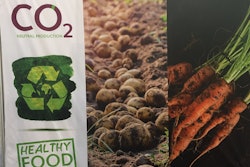
The Chilean pet food market offers unique opportunities for further development, unlike other Latin American countries with intricate economies. As economic upswing and low inflation are two necessary conditions to attain positive results in the pet food arena and Chile has both, the country is ready to embrace the newest global pet food trends, including more premium products.
The local pet food market has two main remarkable features. First, according to trade sources, the industry is too focused on low- and standard-priced pet food products, whereas premium and superpremium segments represent a relatively small portion of the total market.
Second, the consumption of pet food per pet is relatively higher in Chile than in nearby countries as a result of heavily targeting low-price brands. As companies direct the mix of local offerings toward more affordable products, consumers are prone to substitute homemade preparations for inexpensive pet food labels.
Why is the local pet food market hinging on lower tiers?
The focus on lower-priced pet foods is due to the market’s infrastructure. Although there are plenty of multinational products available in the local market, including premium labels, most consumers prefer local and regional brands that focus on the so-called maintenance products, with lower protein content.
In response, the global pet food giant Nestle Purina announced in 2018 the launch of its first production facility in the country, aiming to produce 65,000 metric tons per year locally, representing 80% of the total volume of pet food products sold by that company in Chile. With such an announcement, it is likely that market conditions will change.
Currently, Nestle and other multinational players like Mars export into Chile from neighboring countries. Therefore, Nestle's decision is logical since its global strategy is supported by an ample price-based product segmentation. In this regard, the new production facility may lead to further diversification and a greater array of premium and superpremium products.
Do more premium products mean less consumption?
As Chile is likely one of the largest pet food consumer markets in the region, a natural next step is increasingly migrating pet owners to more added-value products. It is expected that Chile consolidates its route to premiumization in the coming years, given the economic stability and increasing sector investment.
It is hard to predict whether a gradual shift toward premium products would reduce total consumption. That will largely depend on product quality, manufacturers’ specifications and, ultimately, on caloric penetration and the local feeding trends.

















